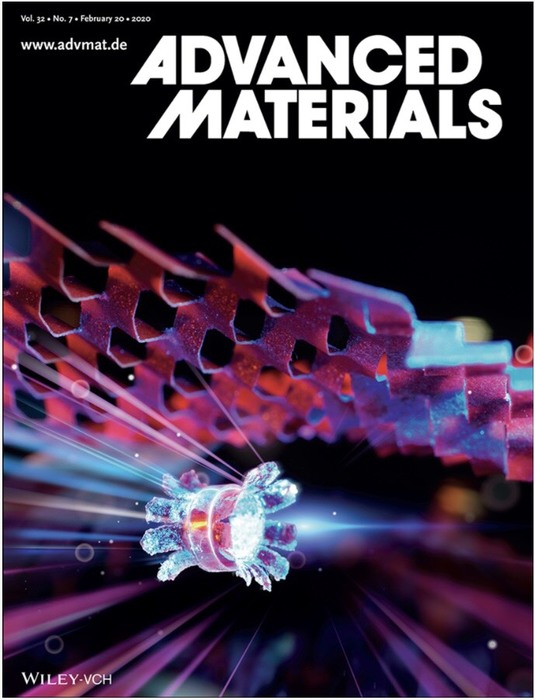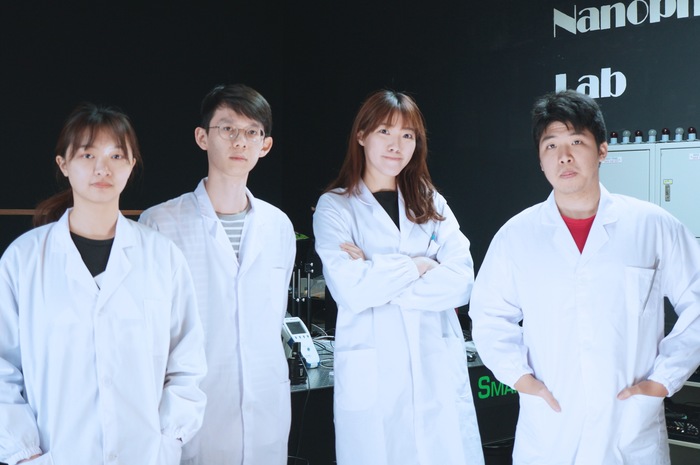Kirigami Actuators published on the cover of Advanced Materials


On the cover of Advanced Materials' current issue shows a next-gen microrobot in a kirigami shape gleaming with bluish lights. This kirigami rolling robot is rather small in size as an ant, but it is versatile in performances through remote and wireless controls. Toy as it’s like, it strikes an astounding breakthrough with its stimuli-responsive properties that former soft microscale robots failed to have.
This microrobot is developed by Prof. Yu-Chieh Cheng, her advisees Hao-Chuan Lu and Xuan Lee at Taipei Tech, and her international research partners Hao Zeng and Arri Priimagi from Tampere University. It is made of the photosensitive materials cut in the shape of a kirigami. The researchers spent 3 years in try-and-error, and successfully activated the tiny robot through the use of lights. Opposed to the simple designs and architecture of other microscale robots, this ant-sized robot creates more possibilities with its 3D shape‐shifting and multigait rolling robot capable of light‐steered 2D motion.
“It was believed that the robotics could not be sized smaller than one millimeter as those are electric-driven by batteries or wires unless it is the chemical nanorobotics,” said Cheng about her research motivation. “But we were curious about whether there are some other sources that can activate an automatized microrobot which is smaller in size through radiation.”
Movements, however, may be restricted by the materials of the robots. The researchers in Cheng’s team thus made a structural transformation on the liquid crystal network, turning its body from a plane surface into 3D rolling kirigami shape. The 2D-to-3D structural transformations, according to the article, “can give rise to mechanical actuation upon light illumination, thus allowing the realization of kirigami-based light-fuelled robotics.”
It is also indicated in the article that “A light beam controls the multigait motion and steers the moving direction in 2D. The device can navigate along different routes and moves up a ramp with a slope of 6°.”
Cheng has noticed it is short of discussion over microrobotics and the application of light-activating liquid crystal polymers when she was still working as an R&D engineer at Intel. The absent discussion became a research gap that motivated her to combine optical science and material science into her research after she joined the faculty of Taipei Tech Electro-Optical Engineering. Proposing the idea on this intriguing cross-disciplinary topic, she later won the research grants from the MOST’s Einstein Program in 2018.
https://onlinelibrary.wiley.com/doi/abs/10.1002/adma.201906233






